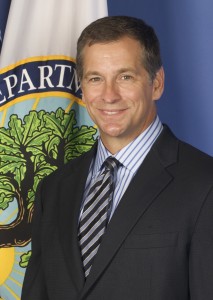A little Sunday reading for you:
Liberty Lost: The Moral Case for Marijuana Law Reform
by Eric D. Blumenson (Suffolk University Law School) and
(Eva S. Nilsen) Boston University School of Law.
Suffolk University Law School Research Paper No. 09-20.
Indiana Law Journal, Vol. 85, 2009
(Note: If you have trouble downloading the paper there, it’s available here.)
In this essay, we present a civil libertarian case for repealing marijuana possession crimes. We put forward two arguments, corresponding to the two distinct liberty concerns implicated by laws that both ban marijuana use and punish its users. The first argument opposes criminalization, demonstrating that marijuana use does not constitute the kind of wrongful conduct that is a prerequisite for just punishment. The second argument demonstrates that even in the absence of criminal penalties, prohibition of marijuana use violates a moral right to exercise autonomy in personal matters – a corollary to Mill’s harm principle in the utilitarian tradition, or, in the non-consequentialist tradition, to the respect for personhood that was well described by the Supreme Court in its recent Lawrence v. Texas opinion. Both arguments are based on principles of justice that are uncontroversial in other contexts.
The arguments used in this paper are not ones that you could likely use in a courtroom today (even the Supreme courtroom) because drug war precedent has too far warped the concept of liberty, yet it is important to have discussions like this to remind us of the roots of liberty in this country, and how the drug laws have damaged them (and to give us something to strive for).
The authors point out that most discussions about marijuana laws revolve around pragmatic terms.
Such debates are crucial elements in any examination of marijuana law and policy, but they ignore the deeper level of justification that may be required by restraints on individual liberty, of which marijuana criminalization is arguably an instance. Restraints on religious practice, for example, cannot properly be evaluated by merely calculating the utilitarian costs and benefits; something of greater moral weight is required to override the fundamental right to free exercise of religion. A key threshold issue regarding the prohibition and criminalization of marijuana use is whether such laws implicate fundamental individual rights, and if so what kind of grounds are required to justify doing so.
In this essay, we argue that these laws do unjustifiably infringe fundamental moral rights. We present a non-consequentialist, civil libertarian case against marijuana prohibition and criminalization, based on the requirements of liberty and just punishment.
The essay takes some inspiration from the Supreme Court decision in Lawrence, which struck down a law criminalizing homosexual sex. The Court’s words in that case ring true in other areas as well…
Liberty protects the person from unwarranted government intrusions into a dwelling or other private places. . . And there are other spheres of our lives and existence, outside the home, where the State should not be a dominant presence. . . Liberty presumes an autonomy of self that includes freedom of thought, belief, expression, and certain intimate conduct. ….At the heart of liberty is the right to define one’s own concept of existence, of meaning, of the universe, and of the mystery of human life. Beliefs about these matters could not define the attributes of personhood were they formed under compulsion of the State. . . .The petitioners are entitled to respect for their private lives.
The authors even address the basics from the Declaration of Independence.
There is also a more quotidian moral right, perhaps less exalted but no less important, which is recognized in the Declaration of Independence as “the pursuit of happiness.†This right should protect those who seek affective rather than cognitive benefits from marijuana – users for whom it serves as a relaxant, a social lubricant, an anti-depressant, or a palliative.50 The right to pursue happiness in one’s own way is worthy of respect, and we disdain countries like Iran partly because they do not respect it. There, certain music and dress is deemed decadent and banned. Here, the default position is that people should be free to pursue their individual and idiosyncratic tastes in recreation, even risky ones like boxing and mountain climbing. Only in a few cases does the majority presume to control the personal pleasures of a minority; marijuana is one of them. (That marijuana use often takes place in the privacy of one’s home greatly compounds the violation.)
A very interesting read (and a nice diversion from the daily slogging through the drug war). The authors specifically chose not to apply their argument to other drugs, but certainly much of their points could easily extend beyond marijuana.

 It may be obvious but, as students across the country head back to school and colleges this fall, it bears repeating: young people who use alcohol and other drugs are much more likely to fail at school than those who don’t. Tragically, many are addicted to failure.
It may be obvious but, as students across the country head back to school and colleges this fall, it bears repeating: young people who use alcohol and other drugs are much more likely to fail at school than those who don’t. Tragically, many are addicted to failure.